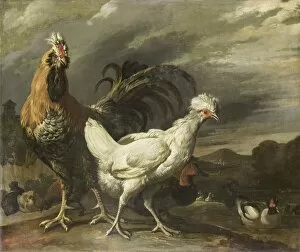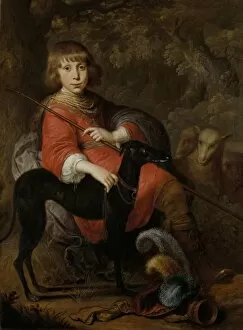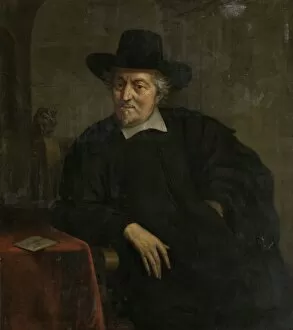Dutch 17th Century Collection (#4)
Step back in time and immerse yourself in the captivating world of the Dutch 17th century
For sale as Licensed Images
Choose your image, Select your licence and Download the media
Step back in time and immerse yourself in the captivating world of the Dutch 17th century. This era, spanning from 1660 to 1672, was a period of great artistic achievements and cultural significance. One notable masterpiece from this time is "Stone Bridge" by Jan van der Heyden. This stunning painting showcases a picturesque stone bridge over a tranquil river, capturing the essence of Dutch landscape art. Another renowned artist from this period is Adriaen van de Velde, known for his exquisite attention to detail. His work "Landscape with Log House near a River" transports you to a serene countryside setting, where nature's beauty intertwines with human habitation. The art scene during the Dutch 17th century was not limited to landscapes alone; portraiture also flourished. Take for instance "Head of a Young Man, " an intimate black chalk drawing on laid paper that captures the essence of youth and vulnerability. Intricate drapery studies were also popular during this time. A prime example is "Drapery Study, " executed in red chalk with touches of black chalk by an unknown artist around 1631. The meticulous rendering of fabric showcases the technical prowess prevalent in Dutch art at that time. Moving on to portraits, we encounter Sara Sweerts de Weert, second wife of Antonius Antonides van der Linden. Her portrait exudes elegance and grace as she gazes confidently into the distance. Aelbert Jansz. Van der Schoor's portrait presents us with another intriguing character from this era - dignified yet mysterious - leaving us wondering about his story and accomplishments. Melchior d'Hondecoeter's masterpiece "Dead Birds" demonstrates his exceptional skill in depicting wildlife scenes realistically while adding an element of drama through its composition. Jurgen Ovens' portrayal of Cornelis Nuyts offers insight into Amsterdam merchant life during this period – showcasing both wealth and influence.









